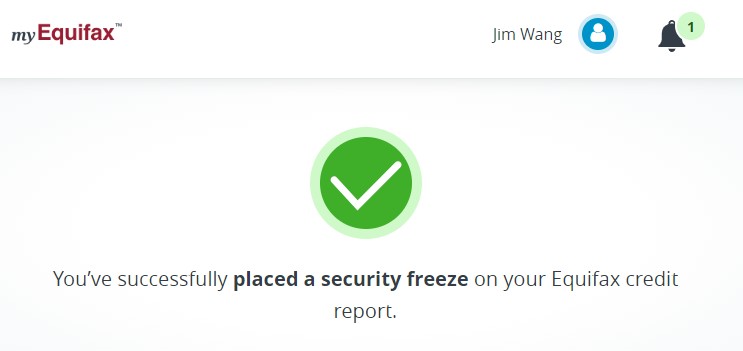Businesses are struggling with digital noise. Can traditional display advertising help them cut through the clutter? Find out. Marketing’s most persistent problem in the modern landscape is that buyers aren’t paying attention. Most demonstrate initial interest and then go radio silent. This has introduced terms such as “buyer silence” and “ghosting” into the marketplace. Digital … Read More "Reach Your Target Accounts with ABM Display Advertising Strategies"
Businesses are struggling with digital noise. Can traditional display advertising help them cut through the clutter? Find out.
Marketing’s most persistent problem in the modern landscape is that buyers aren’t paying attention. Most demonstrate initial interest and then go radio silent. This has introduced terms such as “buyer silence” and “ghosting” into the marketplace.
Digital fatigue is real and has led to attention becoming the most valuable currency for marketers. But there’s a problem – it’s in short supply.
And the incessant digital noise has only added to this conundrum.
Buyers are continuously bombarded with messages from a myriad of platforms, such as social, search, email, and display. Most of which have turned out to be untimely, generic, and irrelevant. What used to be a functional lead-gen engine has been pushed to become background noise.
This is where ABM can help you cut through this clutter.
But ABM alone isn’t enough. Activation through intent signals and display takes its effectiveness one step further. Or it remains theoretical.
But first, is it just another ABM strategy? Not quite.
What Do We Mean by ABM Display Advertising?
ABM display advertising is a B2B marketing strategy that delivers personalized ads to niche, high-value accounts.
Unlike traditional ad campaigns that cast a wide net, this approach focuses on key accounts that not only match your ICP but also illustrate buying intent. The list of target accounts is developed by both marketing and sales, ensuring alignment from the starting point.
Data and intent power ABM display advertising, moving the strategy’s aim from volume to precision.
Quite a stretch, distinct from traditional ad campaigns that fail to grab audience attention or perform in today’s landscape.
The Need for ABM Display Advertising in Your Campaigns
What’s truly the problem with generic campaigns?
In 2024, the average display ads CTR for a majority of B2B campaigns was around 0.46%. And the buyers would complete over 70% of their purchasing journey, even before establishing consistent communications with a brand.
So, only 17-20% of the purchasing process is spent meeting with the vendors. This makes every touchpoint crucial and clogged.
The problem isn’t that buyers have become self-directed and are researching on their own. It’s why they do so in the first place.
Your generic campaigns aren’t reaching them at the right time or with the appropriate context.
Display ads, served on demographics and retargeting pixels, barely scratch the surface. When everyone’s leveraging the same generic game plan, buyers stop noticing.
You aren’t standing out but blending in with the market noise. They scroll past your ads because they feel and look like every other business.
The result: declined CTRs with marketing struggling to justify ad spend.
How does ABM display advertising stand apart?
1. Aligning sales and marketing on who to target.
What improves? Messaging coordination and cohesion. And improved timing of delivery.
2. Personalized ad journeys are created based on audience intelligence.
What improves? Ads are now hyper-relevant and align with the buyer’s current challenges.
3. Hyper-targeting to fit only the right-fit accounts who are in-market.
What improves? Less wastage of resources and a more visible impact on the pipeline.
The Benefit of ABM Display Advertising Campaigns
Why is it the optimal solution?
We have come across vague value props and CTAs such as “Scale faster” or “Grow Your Business Today!” But they don’t highlight real business challenges.
This type of messaging is outdated.
Generic campaigns worked when the audience was receptive to broad messages and there was less market competition. But in the current landscape, it lacks the much-needed edge.
Even B2B buying has evolved. But also oversimplified to fit the makeup of the marketing funnel. But in reality, it’s long, complex, and involves multiple decision-makers.
Most display ad campaigns don’t match this reality and fall flat.
But ABM-driven display advertising can provide you with solutions to revamp your campaigns. It tackles the problems widely present across traditional display ad campaigns:
1. Ambiguous messages.
Numerous campaigns in the market use the same default language – “scale,” “optimize,” or “transform.” They sound strategic, but without the context, they are meaningless. Also, if not backed by actual outcomes.
The marketing director of a fintech company might hold different priorities than the CTO of a healthcare business. Your messaging must reflect this intricate difference. If it doesn’t, your messages simply fail to stick.
2. Buying committees.
Purchases in the B2B landscape are made by a group of decision-makers known as the buying committee. 6 to 10 shareholders with conflicting priorities influence the final decision.
Generic campaigns that speak in only one language fail to resonate with any of them.
3. Right timing.
Traditional display ad campaigns focus on your ICP but don’t consider whether they are in-market or in the buying cycle. This results in wasted resources and low impressions.
Businesses overlook intent signals and continue to operate on the whatever-sticks formula. But it fails. Marketers end up sending messages to cold accounts rather than warming up the in-market ones.
However, with ABM display advertising, businesses can flip the script.
The generic doesn’t work anymore. B2B buyers want relevance, timing, and personalization. And ABM display advertising delivers on all three facets.
ABM Display Advertising Strategy to Reach the Right Accounts on Time
In B2B’s crowded space, there’s a significant difference between being skipped and being seen.
But what if you are seen and heard, and still skipped or scrolled past? That’s equally damaging. The focus is still inherently directed towards relevance and volume.
You need a more intelligent strategy. Your ABM display advertising must engage the relevant accounts at the right time. And add an edge to your marketing campaigns, working in synergy with them.
1. Define your target account list (TAL)
Every marketing campaign begins with defining who your target audience is. And with precision as the fundamental goal of ABM display advertising, it’s necessary to spotlight which accounts truly hold significance.
This step comes before creating your ad.
Marketing and sales must co-develop a proper list to reflect more than just the company name and size. And outline opportunity, strategic alignment, and buying signals. These are a prerequisite.
TAL isn’t a static list but a dynamic one that already exists in your CRM. It’s just that your teams must come together to establish the list of key accounts to engage over the next quarter or year.
This segmentation establishes priority tiers. And guides your strategy development along with the budget and personalization that should be attributed to each level.
2. Curate personalized creative assets
Unlike traditional ads, ABM display ads are highly targeted. So, after outlining your target accounts, it’s time to get into personalization.
This means development content and creatives that speak directly to each account’s challenges and needs. They should be tailored to maximize engagement and resonance, two aspects where marketers falter the most.
Personalizing messages goes beyond just including the company name in the ad. Instead, it should directly illustrate how your solutions can help address particular pain points they might be facing.
This level of personalization is crucial. Because not only does it demonstrate the degree of your marketing efforts, but it also drives stronger connections and meaningful outcomes.
It all boils down to making the account feel understood and valued, whether it’s highlighting your USP or solving a unique business challenge. Go beyond the surface-level information and craft a story that communicates.
3. Leverage data to streamline delivery timings
Precision in targeting is only one piece of the entire puzzle.
The real art of ABM display advertising lies in knowing when to target these key accounts. Timing is what really matters. Because at the end of the day, you could have the best display ads, but if not delivered at the right time, your efforts will fall flat.
Each tidbit is imperative from strategy to execution.
This is where data offers support to your efforts. By leveraging intent signals, you can gauge whether the account is in-market.
Displaying your ads at this turn increases relevancy, also elevating the chances of engagement. This doesn’t just ensure that your ads are seen at the right time. But also positions your brand as the go-to solution when buyers are actively considering their options.
4. Integrate different touchpoints.
Modern customers interact with brands across multiple platforms. And in ABM, consistency is key. One display ad won’t cut it.
So, just one touchpoint for your ABM strategy doesn’t prove effective. Your display ads must work across multiple platforms and touchpoints to build a holistic experience for those interacting with your brand. It should be in concert with other outreach efforts.
Each channel must implement consistency to elevate brand recall.
The result? Your brand becomes the go-to choice.
So, build an omnichannel strategy. Create a persistent brand experience where display ads work in tandem with other touchpoints.
This helps nudge the account a step closer to making a decision and ascertains deeper engagement. Because customers will likely perceive you as a reliable solutions provider, owing to brand recognition.
The transitions between funnel stages become smoother, and customers are well-versed in your narrative with the confidence to convert.
5. Optimization for long-term stability.
You cannot establish ABM as a stagnant strategy. One that will work for years to come.
Like a machine, it requires continuous refinement. While it could initially showcase fewer results, it’s better to let your ABM strategy marinate for the long haul.
It must evolve gradually.
To ensure this, periodically assess your campaign’s performance, especially using data analytics. This will unearth informed insights into which channels, creative assets, and messages are driving the most engagement.
But truthfully, optimizing campaigns goes beyond tweaking an underperforming ad. You must analyze and identify bottlenecks across the entire journey:
- Which accounts are interacting with particular messages or creatives?
- Are there any moments you can push for a stronger CTA or a better offer?
- Which channel is bringing in the most engagement?
Such insights are crucial for tweaking your display ads and for your ABM roadmap.
As you gather data, you gain deeper insights into buyer pain points and triggers. All of it creates a continuous feedback loop.
Optimization isn’t fixing what’s wrong but polishing what’s already in place.
This makes ABM-powered display advertising strategy an iterative process. More efficient and effective for your business, it scales with your objectives.
Your ABM display advertising strategy must remain relevant to ascertain its impact.
It all boils down to precision, personalization, and reach.
A meticulously developed ABM display advertising strategy helps you reach high-value accounts on time. Whether it’s through tailored messages, the right time, or channel optimization, ABM drives lasting relationships, not ROI.
ABM display advertising isn’t just a campaign. It’s a long-term strategic framework. It’s dynamic and evolves as you gather more insights about the accounts and their needs.
For long-term growth, your approach must be agile enough and undergo refinements.
And watch your efforts pay off.








